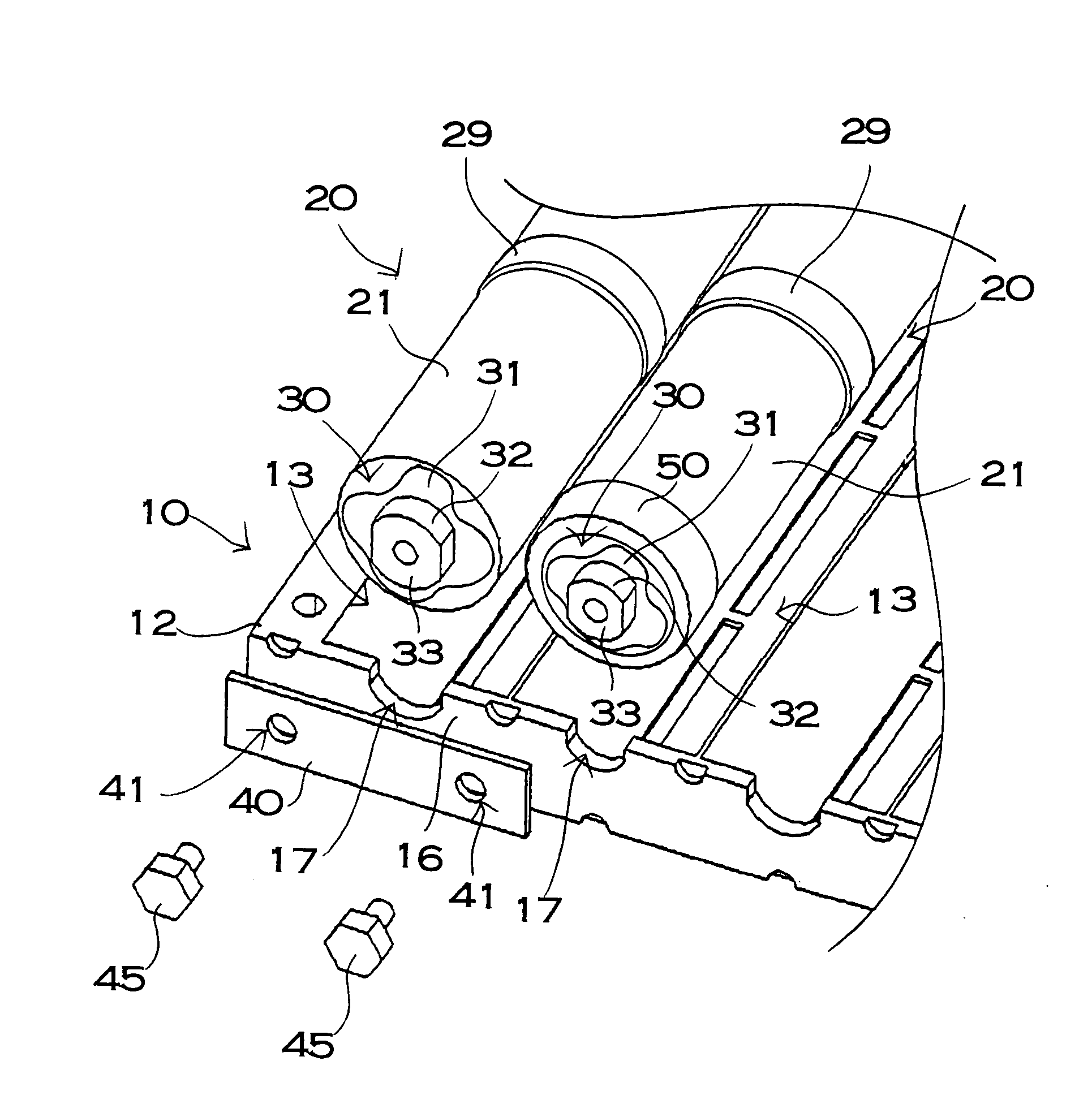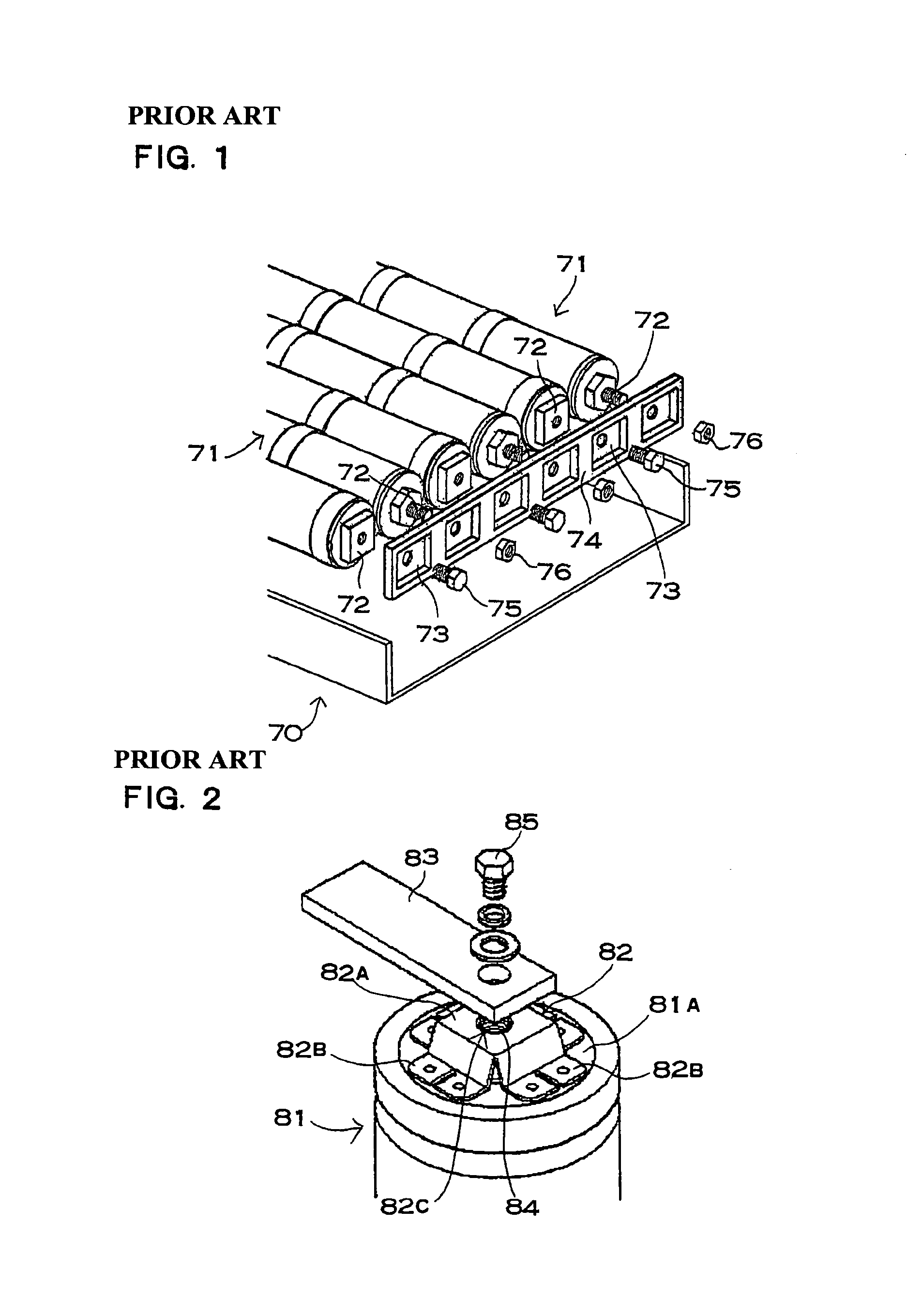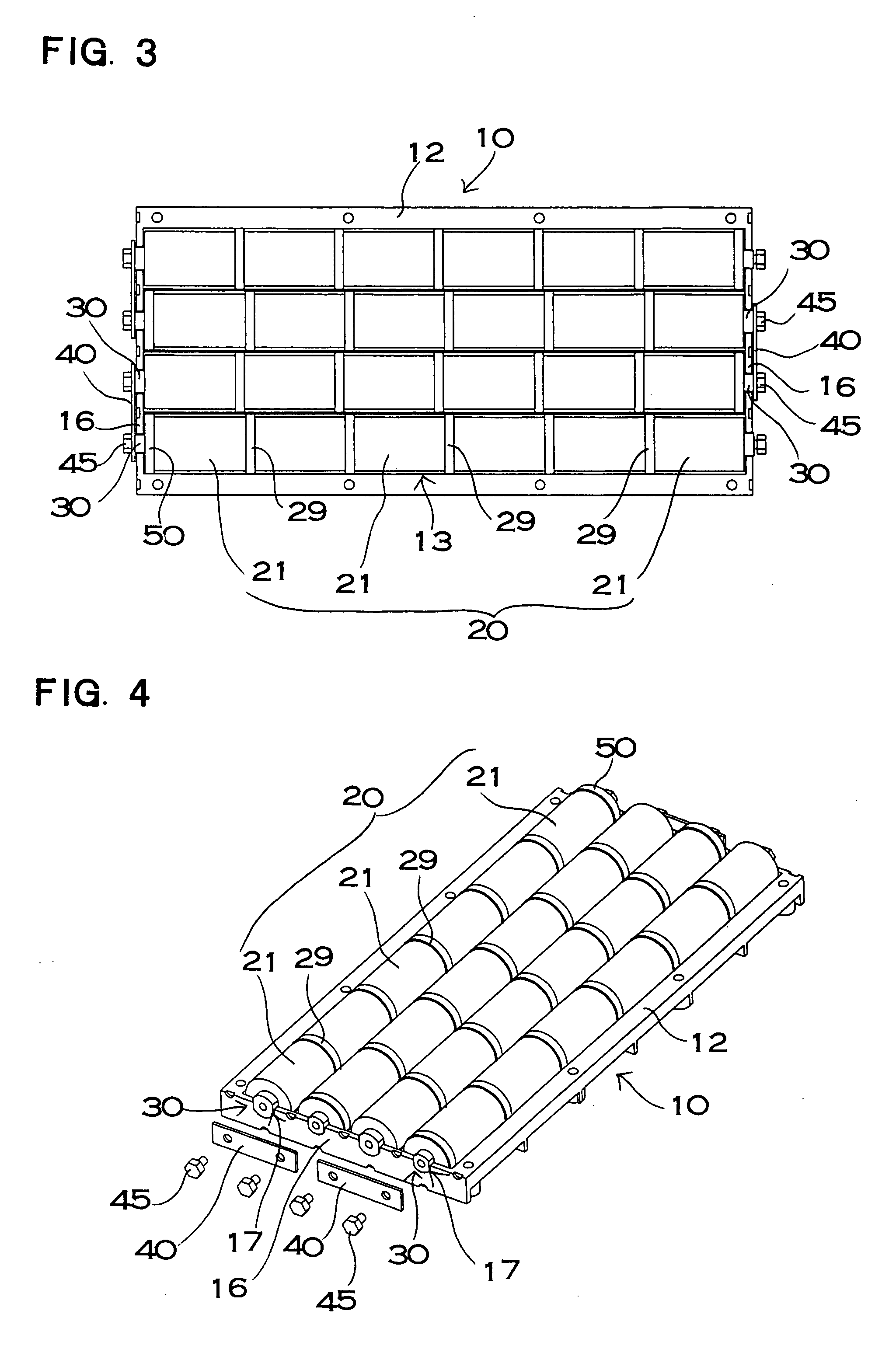Power device coupling a plurality of cells
a power device and plurality of cells technology, applied in the direction of coupling device connections, cell components, sustainable manufacturing/processing, etc., can solve the problems of inability to bring the electrical contact state of the bus bar and the connecting terminal into an ideal state, the coupling strength of the bus bar b>83/b> to a cell b>81/b> is reduced, and the setcrew cannot be fastened with a sufficiently great torque, etc., to achieve mass production
- Summary
- Abstract
- Description
- Claims
- Application Information
AI Technical Summary
Benefits of technology
Problems solved by technology
Method used
Image
Examples
Embodiment Construction
[0047]In a power device shown in FIGS. 3 to 6, a plurality of battery modules 20 in which a plurality of cells 21 is coupled rectilinearly is accommodated in a case 10 and the adjacent battery modules 20 are connected in series through a bus bar 40. The case 10 includes an upper case 11 and a lower case 12. FIG. 3 is a plan view excluding the upper case, FIG. 4 is an exploded perspective view showing the bus bar 40 and a setscrew 45, FIG. 5 is an exploded perspective view in which the battery module 20 is attached to the case 10, and FIG. 6 is a longitudinal sectional view. A power device shown in these drawings is mainly used for an electrically-powered vehicle such as a hybrid car, an electric car or a fuel cell car. The power device according to the present invention can also be used to meet a demand for a large output in addition to the electrically-powered vehicle. In the battery module 20 in the drawings, the secondary cells 21 to be cylindrical cells are coupled rectilinearly...
PUM
| Property | Measurement | Unit |
|---|---|---|
| thickness | aaaaa | aaaaa |
| thickness | aaaaa | aaaaa |
| thickness | aaaaa | aaaaa |
Abstract
Description
Claims
Application Information
 Login to View More
Login to View More - R&D
- Intellectual Property
- Life Sciences
- Materials
- Tech Scout
- Unparalleled Data Quality
- Higher Quality Content
- 60% Fewer Hallucinations
Browse by: Latest US Patents, China's latest patents, Technical Efficacy Thesaurus, Application Domain, Technology Topic, Popular Technical Reports.
© 2025 PatSnap. All rights reserved.Legal|Privacy policy|Modern Slavery Act Transparency Statement|Sitemap|About US| Contact US: help@patsnap.com



